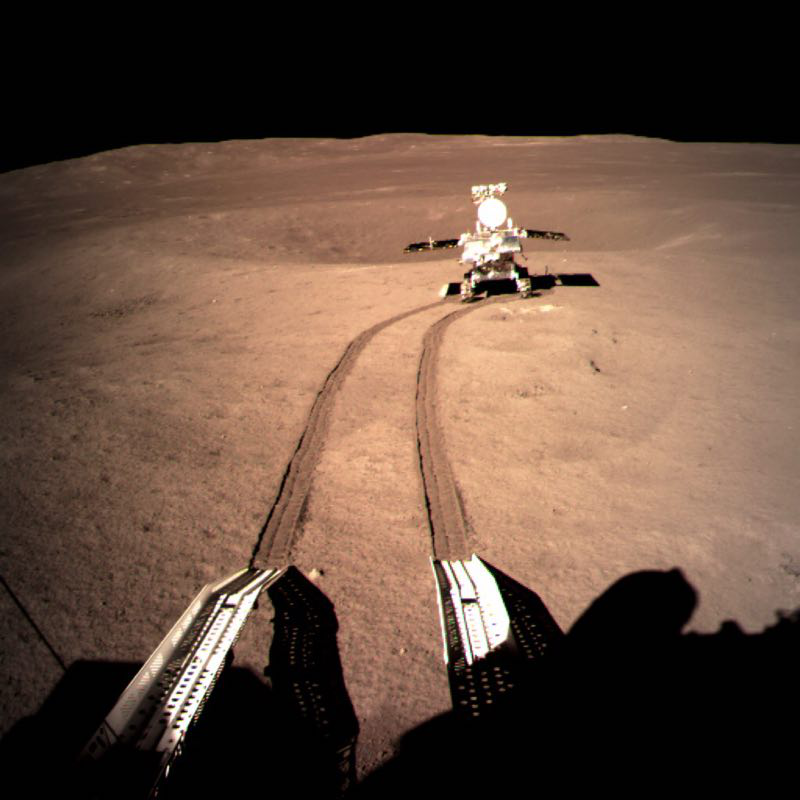Recently, based on the ultra-high spatial resolution image and spectral data obtained by the Chang'e-4 rover, the scientific research team of the National Space Science Center of the Chinese Academy of Sciences identified the carbonaceous chondrite impactor residues of less than 1 million years old in situ on the lunar surface for the first time.
Previous studies have found carbonaceous chondrite meteorite fragments in the Apollo sample, but impact remnants of carbonaceous chondrites have never been directly observed on the lunar surface by remote sensing. The team's findings suggest that the impact of volatile-rich carbonaceous asteroids could still provide water for the current moon.
At the same time, studies have shown the possibility of impactor residues in younger lunar surface materials, such as the Chang'e-5 return sample. The direct analysis of these impactor residues that may exist in the Chang'e-5 samples will provide an important reference for the evolutionary history of the composition and types of impactors in the Earth-Moon system, and is expected to further constrain the evolution of solar system orbital dynamics and improve the understanding of the impact history of the inner solar system. The relevant research results have been published in the international academic journal Nature-Astronomy.

Yutu-2 left the first imprint of a human probe on the far side of the moon
The Chang'e-4 probe successfully landed in the von Carmen impact crater in the South Pole-Aiken Basin on the far side of the moon in January 2019, and its "Yutu-2" rover subsequently carried out continuous inspection of the lunar surface. The Yutu-2 is equipped with a panoramic camera and a visible-near-infrared imaging spectrometer that can acquire ultra-high resolution lunar surface images and hyperspectral data.
During the lunar surface inspection, Yutu-2 discovered a small fresh impact crater and made a detailed spectral detection of this impact crater during the day of the Ninth Month. Based on the close-up images of the impact crater obtained by the panoramic camera, the research team found that there was some material in the center of the impact crater that was significantly different from the crater wall and the lunar soil outside the crater. The analysis of hyperspectral image data obtained by the imaging spectrometer found that the suspected "residue" in the center of the impact crater showed obviously different characteristics from the spectrum of typical lunar soil and rock debris inside and outside the crater, and it was speculated that there was some kind of foreign impactor material with blued spectral characteristics mixed in.
The study collected the spectra of a large number of carbonaceous chondrite meteorites, and after careful comparison, it was found that the residue did have a high degree of similarity with the carbonaceous meteorite spectrum. The analysis suggests that the crater may have formed after the impact of a small carbonaceous meteorite.
Yutu-2 conducts detailed spectral detection of a small fresh impact crater "encountered" on the inspection path
The impact transport process is considered to be one of the main contributors to water ice on the lunar surface and in permanent shadow areas, while carbonaceous asteroids are relatively water-rich and volatile groups in small bodies, and the water they carry during the impact may be partially retained on the lunar surface. Based on the crater degradation model, the team estimated the age at which the crater was formed, and the results showed that the crater should have been formed within a million years.
This direct observation of carbonaceous impact residues suggests that similar carbonaceous meteorite residues may be very common on the lunar surface, and there will be a high probability that similar impact residues will be found in samples taken by Chang'e 5 from a relatively young basalt unit on the lunar surface. At that time, combined with the chronological analysis of the main trace elements and isotopes, the evolution of impactor composition and type can be better defined.
In the future, the use of higher spatial resolution telemetry spectral data will make it possible to find similar impact residue distributions in more places on the lunar surface, thereby further deepening the understanding of the origin and distribution of lunar water.
Producer: Duan Shuang
Editor-in-Chief: Jin Jin
Review: Fan Qiyan
Editor: Zhao Ming
Source: CCTV news client